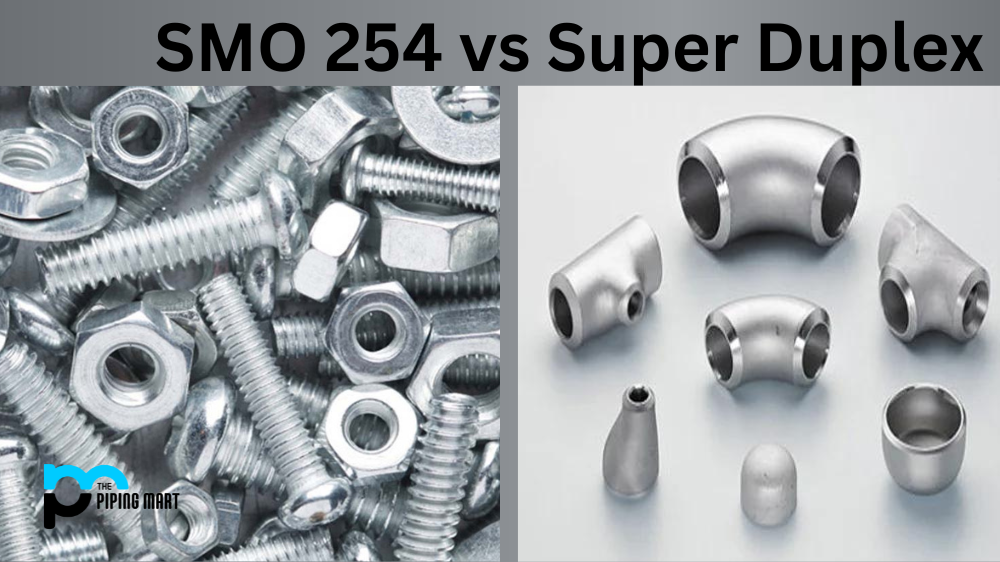The world of stainless steel is vast and varied, with numerous grades and types available for various applications. Two of the most commonly used steps in various industrial and engineering applications are SMO 254 and Super Duplex. This post will discuss the differences between SMO 254 and Super Duplex to help you understand which grade suits your application.
Difference Between SMO 254 and Super Duplex
Composition
SMO 254 is super austenitic stainless steel with higher levels of molybdenum, chromium, and nitrogen than other austenitic stainless steel grades. It also contains copper, which gives it excellent resistance to chlorides, particularly in marine environments. On the other hand, Super Duplex is a two-phase stainless steel alloy that contains high levels of chromium, molybdenum, and nickel and lower levels of nitrogen compared to SMO 254. This composition gives Super Duplex excellent resistance to stress corrosion cracking, pitting, and crevice corrosion.
Strength and Toughness
While SMO 254 has excellent corrosion resistance, its strength and toughness properties are comparatively lower than a super duplex. Super Duplex offers higher strength and toughness, making it suitable for high-stress applications like offshore oil rigs, pressure vessels, and chemical processing.
Weldability
Weldability is also a critical factor when selecting a grade of stainless steel for various applications. SMO 254 has good weldability with multiple welding methods, including GTAW, GMAW, and SMAW. Super Duplex, however, has limited weldability and requires more specialized welding techniques.
Cost
Regarding cost, SMO 254 is relatively more expensive than Super Duplex due to its higher alloy content. On the other hand, Super Duplex offers a cost-effective solution, making it a popular choice in various industries.
Applications
SMO 254 and Super Duplex have broad applications in various industries, including chemical processing, marine, oil and gas, and power generation. However, SMO 254 is more suitable for applications that require excellent corrosion resistance, especially in marine environments, while Super Duplex is preferred for applications that require high mechanical strength and toughness.
Properties
SMO 254 and Super Duplex have excellent corrosion resistance thanks to their high chromium and molybdenum content. However, Super Duplex has superior strength and toughness due to its higher nickel and chromium content.
Conclusion
In conclusion, when choosing between SMO 254 and Super Duplex, it’s essential to consider the specific application requirements, including corrosion resistance, strength, toughness, weldability, and cost. Both grades have unique properties and benefits, making them more suitable for different applications. Understanding these differences will help you select the correct stainless steel grade for your needs, ensuring optimal performance and cost-effectiveness.
Sakshee is a talented blogger, with a particular focus on the Business and Metal Industry. She is passionate about sharing her insights on various metal products and helping professionals to make a better decisions.




